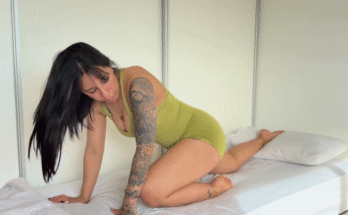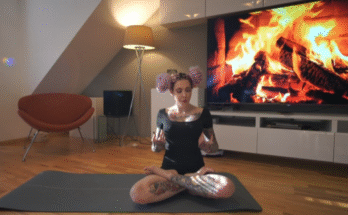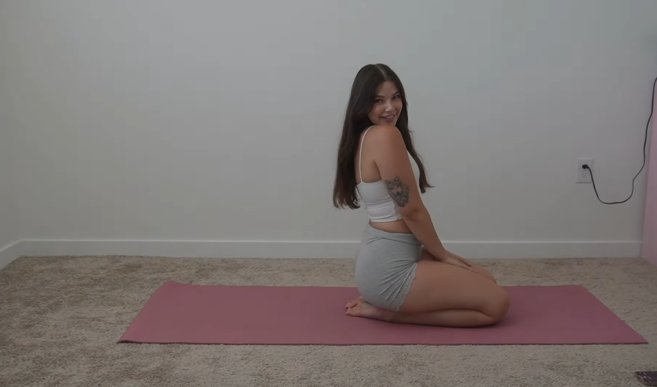
In today’s fast-paced world, where stress and anxiety seem to be constant companions, finding time to slow down and relax is essential. One of the most effective ways to calm your mind, stretch your body, and restore balance is through a relaxing yoga routine. This gentle and mindful practice not only eases physical tension but also nurtures mental peace and emotional well-being.
The Power of a Relaxing Yoga Routine
Yoga is more than just physical exercise; it’s a holistic practice that connects the body, breath, and mind. A relaxing yoga routine focuses on slow movements, deep breathing, and long-held poses that allow the body to release stored tension. Whether practiced in the morning to start your day peacefully, or in the evening to wind down, this routine can become your daily retreat from chaos.
The benefits of a relaxing yoga routine are profound. It can:
- Reduce stress and anxiety
- Improve flexibility and mobility
- Lower heart rate and blood pressure
- Promote better sleep
- Enhance mindfulness and self-awareness
Even if you’re a beginner, a gentle routine is accessible and requires no advanced flexibility. All you need is a quiet space, a yoga mat, and a willingness to breathe deeply and listen to your body.
Setting the Mood
Before beginning, take a few moments to create a soothing environment. Dim the lights, light a candle, play calming music, or simply open a window for fresh air. Wear comfortable clothing that allows your body to move freely. If possible, choose a quiet time when you won’t be interrupted.
Begin in a seated position. Close your eyes and take 5 deep breaths, inhaling through your nose and exhaling slowly through your mouth. Let go of your day and turn your attention inward.
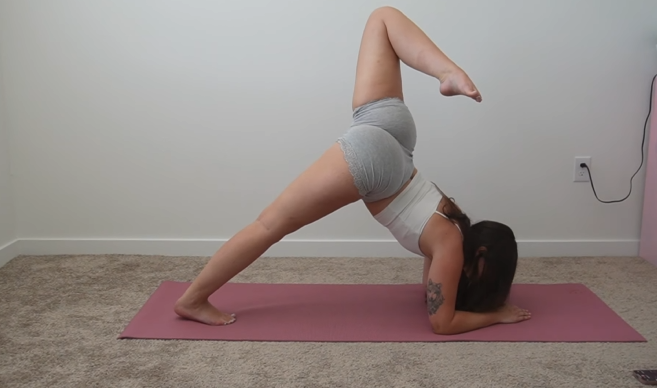
Relaxing Yoga Routine (Approx. 30–45 minutes)
1. Easy Seated Pose (Sukhasana) – 2 minutes
Sit cross-legged with a straight spine. Rest your hands on your knees, palms facing up. Breathe deeply and slowly, relaxing your shoulders and jaw. This pose helps to ground your energy and begin your practice with stillness.
Tip: If sitting on the floor is uncomfortable, sit on a folded blanket or cushion.
2. Cat-Cow Stretch (Marjaryasana/Bitilasana) – 3 minutes
Move onto your hands and knees. Inhale and arch your back, lifting your tailbone and head (Cow Pose). Exhale and round your spine, tucking your chin and tailbone (Cat Pose). Repeat slowly, syncing each movement with your breath.
Benefits: Improves spinal flexibility and warms up the back.
3. Child’s Pose (Balasana) – 3–5 minutes
From your hands and knees, bring your big toes together and sit back on your heels. Extend your arms forward and rest your forehead on the mat. Breathe deeply into your back body.
Benefits: Releases tension in the lower back, hips, and shoulders.
4. Downward-Facing Dog (Adho Mukha Svanasana) – 2 minutes
From hands and knees, lift your hips up and back, forming an inverted V-shape. Keep your knees slightly bent if needed. Press your palms into the mat and relax your head between your arms.
Benefits: Stretches the entire body and boosts circulation.
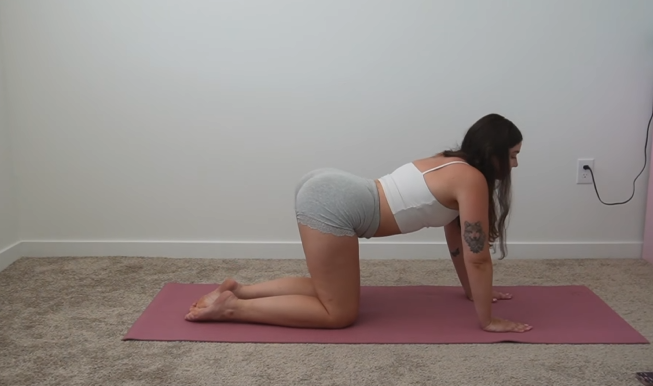
5. Standing Forward Fold (Uttanasana) – 2 minutes
Stand with feet hip-width apart. Slowly bend forward from your hips, allowing your head and arms to hang down. Keep a slight bend in your knees. Let gravity do the work.
Benefits: Calms the nervous system and releases tight hamstrings.
6. Seated Forward Bend (Paschimottanasana) – 3 minutes
Sit with legs extended forward. Inhale, lengthen your spine; exhale, fold forward over your legs. Reach for your shins, ankles, or feet. Avoid forcing the stretch—just relax and breathe.
Benefits: Stretches the spine and hamstrings; promotes inner calm.
7. Reclining Twist (Supta Matsyendrasana) – 3 minutes per side
Lie on your back. Hug your right knee to your chest, then guide it across your body to the left. Extend your right arm out and look over your right shoulder. Repeat on the other side.
Benefits: Releases tension in the lower back and aids digestion.
8. Legs-Up-The-Wall Pose (Viparita Karani) – 5–10 minutes
Sit next to a wall, lie back, and swing your legs up the wall. Let your arms rest by your sides. Close your eyes and breathe deeply.
Benefits: Promotes circulation, reduces swelling in the legs, and calms the mind.
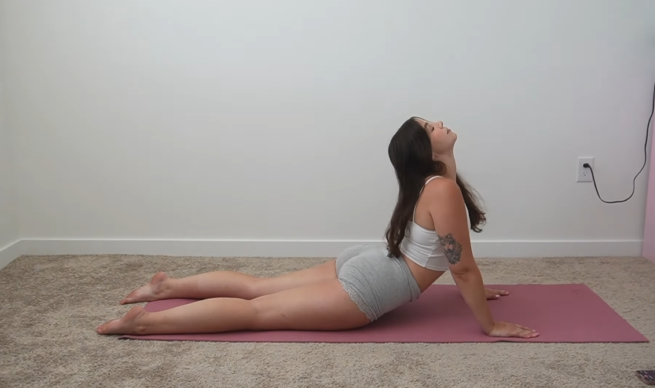
9. Corpse Pose (Savasana) – 5–10 minutes
Lie flat on your back with arms and legs relaxed. Let your feet fall outward and your palms face up. Close your eyes and let go of all tension. Focus on your breath and allow your body to absorb the practice.
Tip: Use a blanket or bolster under your knees for added comfort.
Breathing & Mindfulness During Practice
Throughout your relaxing yoga routine, your breath should be slow, deep, and intentional. Breathing deeply into the belly activates the parasympathetic nervous system, signaling the body that it’s safe to relax.
If your mind starts to wander, gently bring your attention back to your breath. You can silently say “inhale” and “exhale” to guide you. Mindfulness is the heart of a relaxing yoga practice—it’s not about achieving perfect poses but about being present in each moment.
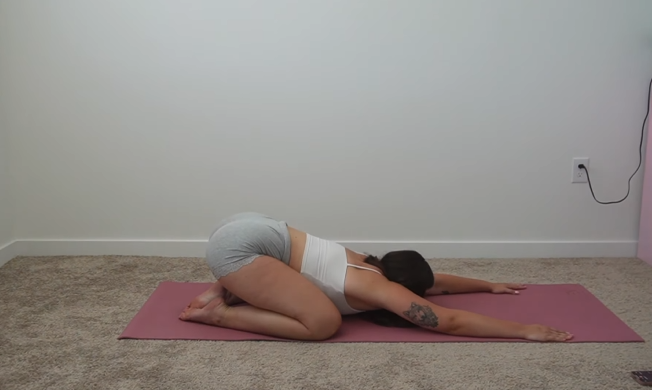
Final Thoughts: Make It a Daily Habit
Incorporating a relaxing yoga routine into your daily life can be a life-changing habit. Even if you only have 15 minutes, taking time to connect with your body and breath can help you feel more grounded, calm, and centered. Unlike intense workouts, a calming yoga practice is gentle enough to be done daily without overexerting your body.
As you continue this journey, you’ll notice subtle changes: better sleep, improved mood, less tension, and a deeper sense of self-awareness. The more you show up for yourself on the mat, the more these benefits will ripple into every part of your life.
So unroll your mat, take a deep breath, and begin. You don’t need to be flexible or experienced—you just need to start. Your mind and body will thank you.
